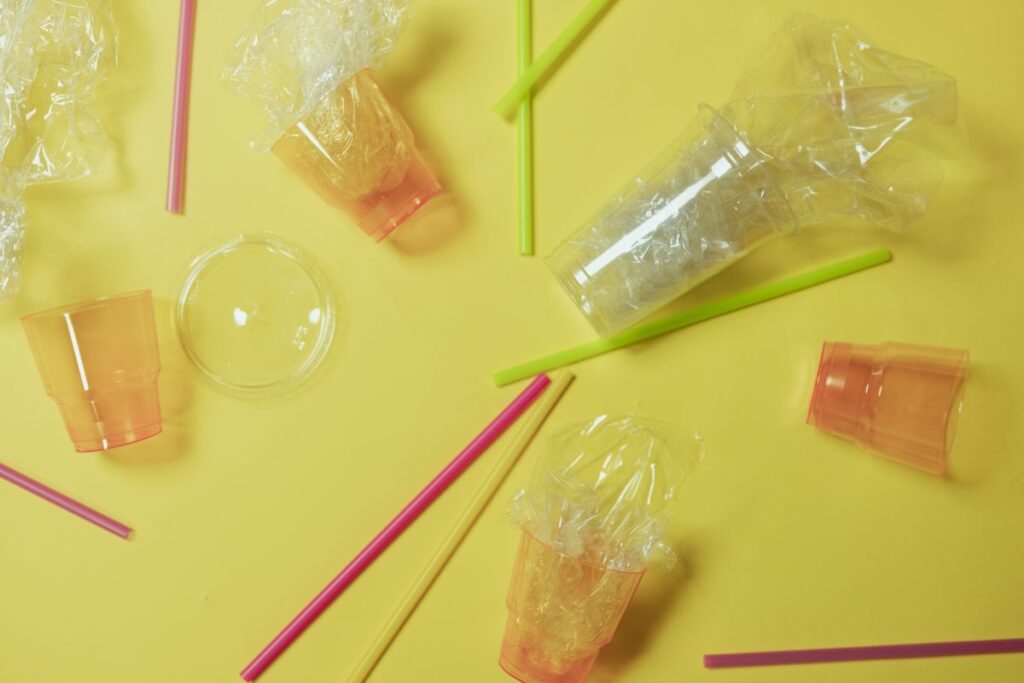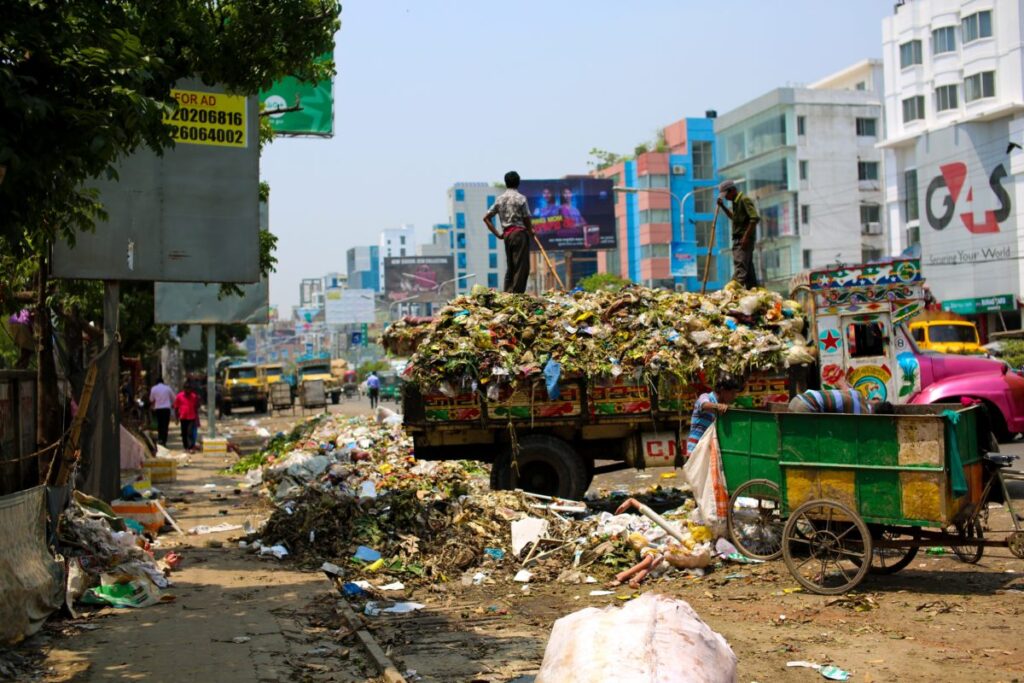Persuading packaging professionals to turn our backs on formerly cost-effective manufacturing methodologies is an uphill climb. However, thanks to a number of worldwide plastic packaging directives being put into place there is light at the end of the tunnel that aims to educate and support both global companies and our end consumers.
We’ve broken down the current global legislations below, to make it simpler than ever to understand which will affect you, from when and what implications they might have for your daily operations.
EU / EUROPE PLASTIC PACKAGING DIRECTIVES
Brexit has added an extra layer of confusion into the mix here, but it’s simpler than you might first assume, to understand what rules, regulations and plastic packaging directives are being brought into effect. Essentially, there is an EU directive to get acquainted with, a Denmark-specific packaging law update and UK initiatives, including a tax levy, to navigate.
EU Single-Use Plastics Directive
Effective date: May 2019 with expected compliance of member states immediately
What it is: Proposed in May 2018, the Single-Use Plastics Directive (‘SUP Directive’) was the result of numerous studies into the harmful effects of certain packaging materials and consumables. The aim is to effectively phase out single-use plastics in a bid to reduce marine contamination and pollution, 85% of which can be attributed to plastic waste, while moving towards manufacturing models that favour reusable materials, promote easy recycling and end user awareness.

Initially designed to tackle plastic waste and abandoned fishing equipment frequently found on beaches, the plastic packaging directive was expanded to also include items made from bio-based and biodegradable single-use plastics. Materials are assessed to determine which category of waste they fall into and then a course of action is decided upon, ranging from total bans to encouraged reduced use and finally, Extended Producer Responsibility schemes (‘EPR). Categories and courses of action are as follows:
- Items with alternatives freely available already: Banned by mid-2021
Banned items: straws, drinks stirrers and disposable cutlery, cotton bud sticks, plates (plastic-lined paper options included), balloon sticks, expanded polystyrene food containers (including cups and general beverage holders) and oxo-degradable plastics. Single-use options will no longer be produced at all.
- Products with comparable alternatives not yet readily available: Consumption reduction
Items to be used less: food containers and cups for drinks (including any covers or lids). This will be achieved through encouraged use of reusable containers, deposit return schemes (‘DRS’) and restrictions on certain items.
- Items already addressed by existing EU law: Position strengthening and EPR compliance
This includes things such as lightweight plastic bags, fishing equipment and food containers. Most of these are already being covered by EPR schemes that aim to reduce the amount of non-recyclable properties by at least 50%, by placing the onus of end-of-life responsibility firmly on original manufacturers, with financial penalties in place for non-compliance. Producers are expected to cover costs for waste collection, any necessary treatments and should be proactive about keeping end users informed about environmental impact.
- Other single-use plastics: Full EPR scheme compliance
By 5th January 2023, all producers will have to work with EPRschemes to tackle waste created by their products which do not fall into the previous categories. EU beaches have seen a high volume of balloons, tobacco packaging and sanitary waste washing ashore, which will need to be tackled directly by the producers through waste collection and effective product labelling and awareness campaigns aimed squarely at end users.
Affected parties: All EU member states and any producers operating within them. All companies, at every stage of the supply chain, will need to be fully compliant with the SUP Directive. This includes large conglomerates, such as Coca-Cola et al, who will have to comply at local levels, putting waste management practices and awareness initiatives into place. Strong enforcement is expected in all member states, with each being directly responsible for local compliance. Though the overall rules are uniform, local law adaptations will be necessary, meaning that as a whole, the EU will be shown to be making positive steps, but individually, each member state is playing its part.
Impact on end users: If done correctly, there should be minimum disruption to users as viable alternatives to traditional products should be filtered into the supply chain seamlessly. It is likely that price fluctuations will occur initially, but with proper awareness campaigns in place, users will understand the value in making single-use plastic a packaging norm of the past.
Denmark’s PFAS Ban On Paper And Cardboard Food Packaging
Effective date: July 2020
What it is: A blanket ban on the use of per- and polyfluoroalkyl substances (PFAS) within paper and cardboard food packaging. The only exception to the rule is if the PFAS does not come into direct contact with food, thanks to a ”functional” barrier. The European Commission was notified of the impending ban in 2019.
Affected parties: Producers of paper and cardboard food and beverage packaging with PFAS. There are no EPR schemes in place to offset continued manufacture, so alternate compositions are the only option. This will have resulted in potentially costly restructuring.
Impact on end users: Little to none, though consumers have easy access to information about the ban on PFAS, if they wish to find out more.
UK Packaging Tax
Effective date: April 2022
What it is: The UK Plastic Packaging Tax (‘PPT’) has been cited as a proactive way to encourage producers to switch to environmentally conscious materials and improve the recyclable properties of items manufactured.
Any plastic packaging that contains less than 30% recycled plastic will have a levy applied, as will imported goods. The important caveat to note here is that for something to be considered as “plastic packaging”, the plastic itself has to be the heaviest constituent ingredient. Even biodegradable and compostable plastics are going to face a tax penalty at present (this is under review) and there are some interesting definition issues cropping up, with recycled plastic not being a regulated term.

The cost will be £200 per metric tonne of packaging that has less than 30% recycled plastic in its composition and there are a few exceptions:
- licensed human medicines packaging
- transport packaging to import items into the UK
- Transportation stores for international journeys, therefore not staying in the UK
Affected parties: Packaging producers and importers will feel the sting of the tax levies, if they bring more than ten metric tonnes of plastic packaging into the UK in any 12-month period. Buyers of packaging are likely to start requesting proof of PPT payment, as recuperation of levies can fall to any person within the supply chain, if it can be proven that they had reason to suspect non-compliance.
All producers and importers of plastic packaging are obliged to register with HMRC and failure to do so will incur evenmore financial penalties.
Impact on end users: It is likely that consumers will see an increase in product prices, to cover the increased packaging liabilities.
The UK government has taken steps to make compliance with any and all environmental initiatives as simple as possible, with its Green Claims Code. A Practical attempt to minimise the risk of greenwashing or falsified eco claims, it highlights how businesses that want to use green claims in their marketing and promotional drives can do so legitimately. Those found to be making claims that are not true can face investigations from the Advertising Standards Authority (‘ASA’), Trading Standards Services and industry regulators, as well as criminal charges. This is designed to protect end users and ensure genuine compliance with established environmental legislation.
US PLASTIC PACKAGING DIRECTIVES
In 2020, Forbes revealed that US citizens produce more plastic waste, per person, than any other nation on earth. Racking up an average of 105kg per year, this figure is brought into sharp focus when you understand that only 9% of the plastic ever produced is thought to have been recycled. With these figures in mind, it’s easy to see why certain states have been pushing an anti-plastic agenda in recent years.
California Safer Food Packaging And Cookware Act of 2021 (AB1200)
Effective date: January 1st 2023
What it is: A total ban on the use, production and import of paper-based food packaging that contains PFAS, as well as a demand on cookware producers to disclose the use of any potentially harmful chemicals. Misleading advertising on packaging will also be prohibited.
California has been especially transparent about the findings linking PFAS to cancer, vaccine disruption and other serious environmental and bodily consequences. AB1200 will ensure that producers use the least toxic alternatives available to them. This comes after the demonstrable success of a similar legislative change in San Francisco.
Affected parties: Producers of paper food and beverage packaging with PFAS. Any operation manufacturing “food or beverage containers, take-out food containers, unit product boxes, liners, wrappers, serving vessels, eating utensils, straws, food boxes, and disposable plates, bowls, or trays” will need to stop all use of PFAS.
Impact on end users: Access to transparent information that can guide informed purchases and decisions. If the Center for Environmental Health is to be believed, improved health and well-being too.
California Plastic Waste And Labelling Bills
Effective date: various
What it is: A number of laws being proposed by Senator Ben Allen to not only make product labelling less misleading but also to shine a light on the responsibility of packaging producers to find alternatives to single-use, non-recyclable plastics.
- SB 54 Plastic Pollution Producer Responsibility Act
Aimed at saving local governments money in terms of waste disposal, this law will see packaging producers having to redesign items to create less waste by using right-sizing, while also attempting to sub-in reusable materials wherever possible. Recycling and composting targets will be a major part of the bill too, stating that all disposable packaging and “food serviceware” must be either fully recyclable or compostable by 2032.
- SB 343 Truth in Labeling for Recyclable Material
A standalone law to prevent the term ‘recyclable’ being used on product packaging that is not and better regulation of the chasing arrows symbol. This is designed to prevent misleading consumers who believe they are making ethical purchases.
Affected parties: producers of single-use plastic packaging that is currently not easily recyclable and/or misleadingly labelled. If alternative materials cannot be sourced and utilised by 2032, producers may find themselves unable to supply customers within California.
Impact on end users: Increased awareness and better understanding of which items can truly be recycled, leading to more informed consumption.
Maine EPR Law
Effective date: TBC
What it is: An EPR programme that applies to the vast majority of consumer packaging, including but not limited to single-use food items. A notable exception is beverage containers, which are already covered by a deposit scheme, as well as small producers who introduce less than 15 tonnes of packaging into the state annually. The idea is to motivate producers to make a positive change in the way they design and manufacture their products, with end-of-life always in mind.

Affected parties: Packaging producers. Companies would be responsible for making payments to a stewardship programme, appropriate to the materials they use, in order to effectively manage end-of-life waste. This fiscal motivation could help producers to move towards higher percentages of recyclable components more quickly, but might also prove costly in the interim.
Impact on end users: Less tax burdens as waste management systems would be supported by packaging producers. Given that 40% of Maine’s waste is packaging related, placing the monetary responsibility for effective disposal and improvement of facilities on the shoulders of those who make them necessary seems like an idea the state’s population can get behind.
AUSTRALIAN PLASTIC PACKAGING DIRECTIVES
Industry-driven stewardship programmes take the place of stringent bills and laws in Australia, with lots of domestic companies seeking to support environmental initiatives that will bring packaging production into the 21st century.
Australian Packaging Covenant
Effective date: Targets to be met by 2025
What it is: One of the most ambitious plastic packaging directives out there, the Australian Packaging Covenant Organisation (APCO) operates alongside local governments and willing businesses to reduce packaging waste throughout the entire country. Businesses are invited to become members of the covenant and on doing so, receive advice to improve the sustainability of finished products and ongoing processes. They also commit to trying to make extremely ambitious targets a reality.
Over 1,500 businesses are currently signed up, from throughout the packaging supply chain and all are working together to make:
- 100% of all packaging types either reusable, recyclable or compostable by 2025.
- 70% of plastic-specific packaging being recyclable or compostable by 2025.
- 50% of packaging composition to be made from recycled material by 2025.
- Single-use plastic packaging obsolete by 2025.
Affected parties: Joining the covenant is voluntary, but those businesses that choose to commit are signing up for significant restructuring. There is support at hand however, meaning that conscious manufacturers are getting ahead of the game and might prove to be more popular with end users too, creating a surge in demand for products. Businesses that fall behind and don’t sign up could end up being left out in the cold, especially if any EPRs, tax levies or penalties are introduced for environmentally outdated manufacturing processes.
Impact on end users: Potentially increased costs, but with such ambitious targets in place, once they are reached, pricing should settle and remain competitive.
CHINA’S PLASTIC PACKAGING DIRECTIVES
It’s fascinating to note that China is the largest producer of plastic packaging, but per person, produces the least amount of waste annually. The reason for this is likely to be the already stringent mandates that see plastic use being heavily discouraged, through increased costs, as well as easy access to reusable alternatives.
Plastic Pollution Control
Effective date: Phased compliance by 2025
What it is: A staggered and staged list of directives designed to gradually phase out the use of single-use plastic packaging. The initiative has been split into three distinct phases:
- Banning of non-degradable plastic bags. This began with them no longer being offered in markets and by the end 2025 will have rolled out throughout China, with them being totally banned everywhere.
- Disposable plastic tableware to be withdrawn from use. Starting with non-degradable straws and ending with catering services supplies, by the end of 2025, this should be a thing of the past in China.
- Ban on disposable plastic items in the hospitality sector. An enormous task, but one that is making good progress already. By the end of 2022, all major hotels and guesthouses should have stopped offering disposable plastic products and by the end of 2025, smaller operations will be expected to have ceased as well.
Affected parties: Hospitality services, the catering industry, foodservice professionals and packaging producers. The latter will be expected to highlight and encourage the use of reusable, recyclable and fully degradable alternatives to single-use plastic, potentially investing in new production methodologies to support them.
Impact on end users: Possibly the least of all, globally. As Chinese citizens are thought to, on average, create just 15kg of plastic waste each per year, there seems to be a culture of choosing reusable items already in existence. Manufacturers are exporting much of their plastic packaging to other countries and therein lies the biggest issue.
INDIA’S PLASTIC PACKAGING DIRECTIVES
Plastic Waste Management Amendment Rules, 2021
Effective date: 2022
What it is: A focussed effort to entirely eradicate single-use plastic from India, by 2022. Presently, around 60% of plastic waste is effectively collected and recycled in India, but the remaining 40% is left to litter streets and contribute to landfill sites. With just shy of 10 million tonnes of plastic waste created every year, these percentages translate into enormous amounts of unrecycled pollutants.

Plastic items are being actively banned, in accordance with their hygiene and environmental ratings. But prohibition is not enough, which is why countrywide task forces have been initiated to oversee the compliance of packaging companies and business users. Awareness campaigns have been heavily invested in as well, with challenges, school events and higher education students all helping the cause.
Affected parties: Packaging producers unwilling to adapt to new demands will likely see themselves tackling a fall in profits, especially as EPRs are given extra powers to apply sanctions to plastic manufacturers.
Impact on end users: Mostly positive, with cleaner streets and smaller landfills, though it’s worth noting that cultural shifts might be more challenging to navigate, especially with older generation that are used to storing countless plastic bags at home.
The simple truth is one that we all know: single-use plastic is harmful to the environment and end users want to see less of it. As professionals, we have to tread the line between ethical and cost-effective manufacturing, setting an example while staying buoyant. Remaining aware of and compliant with all our local plastick packaging directives is key, while always striving for transparent communications with both business partners and end users, because we all have a role to play, but ours is the most influential and important of all.






